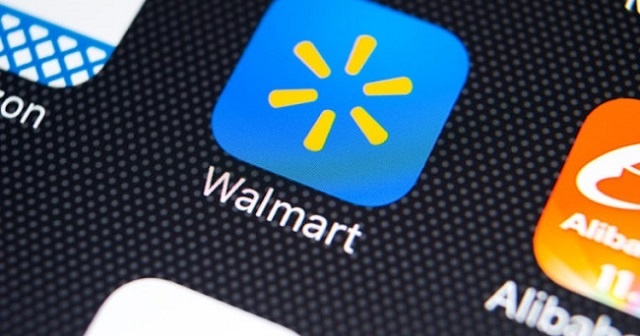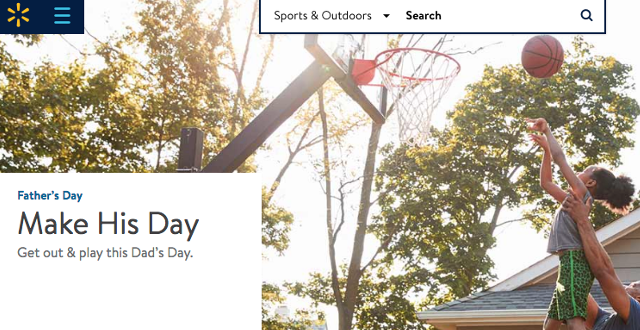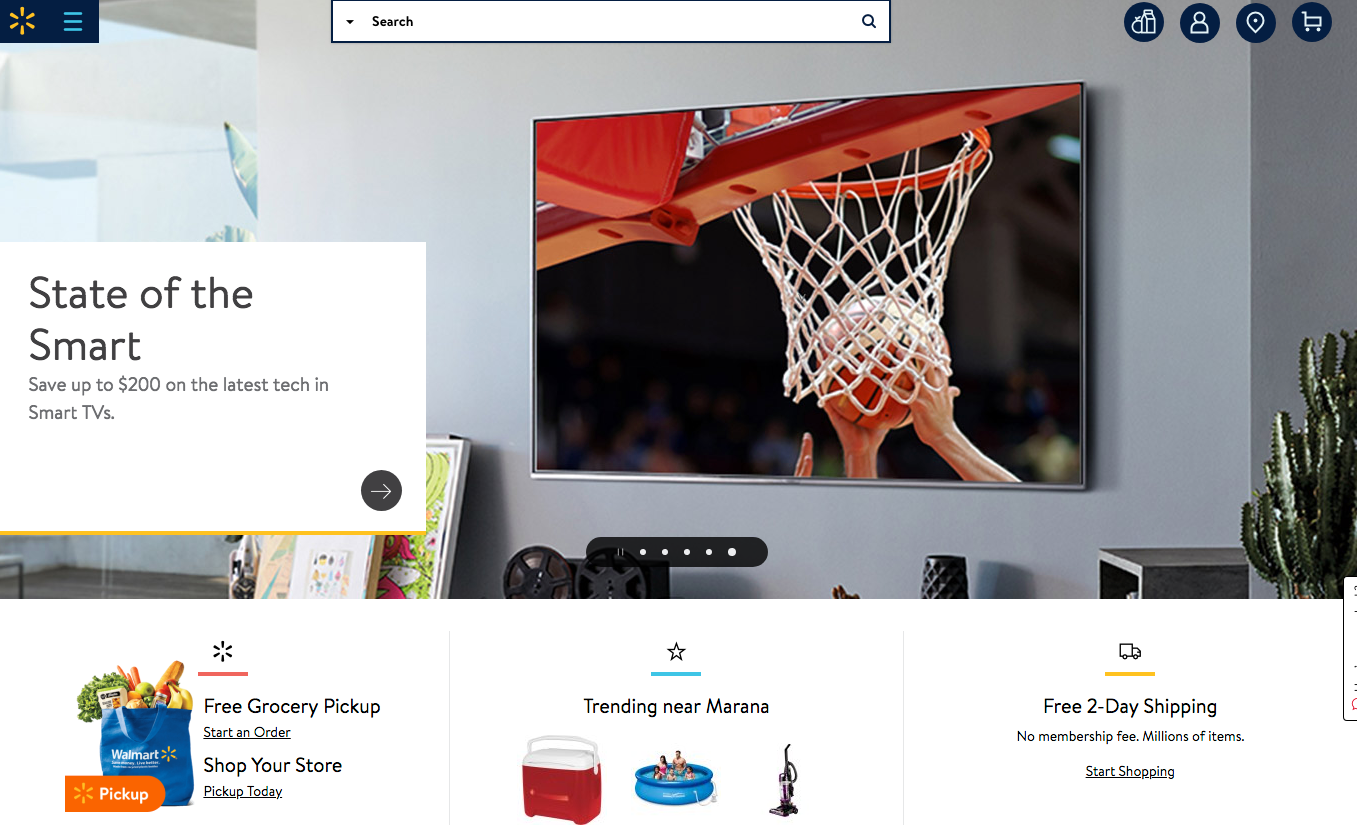
Once you know the pros and cons of selling on Walmart Marketplace, you’ll probably want to get started as a seller. Before you move ahead, it’s probably a good idea to familiarize yourself with some of the options available , the application process, and how working with an integrated partner can help ensure your success.
Walmart DSV vs Marketplace Seller
Walmart offers third-party merchants two types of partnership options: the Drop Ship Vendor (DSV) program and the Marketplace Seller program. Each type of merchant will have slightly different responsibilities, challenges, and opportunities.
How Drop Ship Vendor Program Works
With the Walmart DSV program, you sell your products to Walmart. When Walmart receives an order from one of its shoppers, it forwards the order to you. At that point, you ship the product from your location to the buyer. Products will be displayed as “Sold & Shipped by Walmart.com.”
If you join the Walmart DSV program, you don’t have much control over your product description and customer service. Instead, you act as an order fulfillment specialist for Walmart.
Marketplace Seller Program by Walmart
By contrast, marketplace sellers are essentially similar to Amazon or eBay third-party merchants. Products sold by these sellers will be labeled as “Sold & Shipped by Marketplace seller.”
As a marketplace seller, you’ll be responsible for things like:
- Writing product descriptions;
- Posting images of your products;
- Repricing products to stay competitive with other sellers;
- Providing customer service.
Before deciding how to sell on Walmart.com, think about Walmart DSV vs. Marketplace Seller opportunities. That way, you can choose the option that’s right for your multi-channel business.
Benefits of Applying Through an Integrated Partner
Many ecommerce businesses find the application process somewhat burdensome. They want to become sellers or DSVs, but they don’t necessarily have time to fill out applications and wait for Walmart to review the information.Simplicity is one of the greatest benefits of applying through Walmart Marketplace integration partners. After you apply, you can use your Walmart integration partner to:
- Streamline the onboarding process;
- Access data that will help you reach more buyers;
- Manage your orders, invoices and shipments;
- Sync your SKUs between the integration tool and Walmart Marketplace.
By choosing a reliable integration partner, you make the application process easier and you get to sell more products while spending less time managing your listings.
How to Get Started with Walmart Marketplace
Walmart requires you to go through an application process to become a DSV or seller. During the application process, you will need to provide information about:- Your company’s location;
- Your bank account information so you can get paid by Walmart;
- A copy of your most recent W-9 form.
Start by completing the Seller Application, which should take about 10 minutes. The approval process takes around 1-2 weeks. If approved, onboarding and integration generally take 2-4 weeks.
Use the following steps to make the process as simple and fast as possible.
Step 1: Start your application
Go to Walmart Marketplace and submit your initial application to become a seller. The application takes about 10 minutes to complete.
Step 2: Complete your registration
Walmart will email you a unique link that you can follow to complete your registration.
You must complete your partner profile before you can go live on Walmart Marketplace. Filling out your partner profile requires your:
- Company information, such as the company name, logo and a short description;
- Customer service email, phone number, customer service escalation email and customer service policy. You can use up to 4,000 characters to describe your customer service policy;
- Shipping options, including your shipping rates, standard processing schedule and shipping policy;
- Return policy;
- Privacy policy that describes how you plan to keep your customers' information secure.
Finally, you must provide some tax information, such as your nexus (where you're required to pay sales tax), shipping tax codes and sales tax policy.
Step 4: Verify your bank deposit
Walmart will transfer a penny to the bank account that you provide. Once you receive the transaction, you can verify your account. The process usually takes up to two days.
Step 5: Complete item setup
Completing your item setup is the most involved part of becoming a Walmart Marketplace seller. First, you must select a category for your item. You will then have to provide a description of the item and any other information required for the particular category. It often helps to include pictures, videos, attributes and anything else that can optimize your listing.
Step 6: Test items and orders
Test your items to make sure you've submitted them correctly on the marketplace. You can do this by selecting Preview Item in the Seller Center.
Step 7: Confirm that you're ready to launch
Once you complete all the steps above, you should see a popup to confirm if you are ready to launch. Clicking yes will alert the Walmart Marketplace Integration team to set your account live.
Step 8: Wait for Walmart to launch your account
Once your account is fully live, you can start selling directly to customers.
Step 9: Start ramping up your item assortment
Now is the time you’ve been waiting for. It’s time to list your products on the marketplace to expand your product offering.
Step 10: Set up your operations and support
Make sure that your seller operations and support are in place. You may even want to send test emails to your account to make sure you receive them in a timely manner.
Step 11: Optimize your seller scorecard
Like any marketplace, performance is key to beating competition. Optimize your seller scorecard by keeping prices low, delivering items promptly and providing excellent customer service.
Step 12: Aim for the Walmart buy box
While the Walmart buy box may be primarily focused on price, marketplace algorithms are becoming smarter and focusing more on experience. Aside from providing the best deals and maintaining an excellent scorecard, make sure you focus on delighting your customers.
As with everything in ecommerce, growing as a seller means delivering a great customer experience. Sales will come naturally after.
Walmart Marketplace FAQs
What fees do you have to pay to sell on Walmart marketplace?
You don’t have to pay any setup or subscription fees. Walmart will, however, collect a referral fee for the products you sell. The referral fee percentages vary depending on the type of product you sell. You can find referral fee percentages by category here.
Unfortunately, Walmart doesn’t share the process that it uses to choose its sellers. You can, however, increase your chance of getting accepted by focusing on:
- Unique products that aren’t already sold on Walmart Marketplace;
- Competitive prices;
- Fast shipping that will keep customers happy;
- Excellent customer service.
Can you become a Walmart marketplace seller and DSV?
Yes, you can. You cannot, however, sell the same items as a DSV and a seller. Instead, you will have to decide which type of account you want to use to sell each of your items on the Marketplace. Since there are pros and cons to each approach, you should use software such as Jazva to analyze your options and decide which one will earn your business the most money.
Is it easier to become a DSV or a marketplace seller?
Since Walmart doesn’t share its application acceptance process publicly, it’s hard to say whether it’s easier to become a DSV or a Marketplace seller. Realistically, most ecommerce businesses have equal success with both types of applications.
As the name suggests, this is an agreement that defines the obligations of Walmart and Marketplace retailers. The Walmart Marketplace Program Retailer Agreement is a fairly lengthy document, but you should read it carefully to make sure you understand your rights and responsibilities, especially regarding important features such as:
- Walmart’s payment plan options
- Required product information
- Order fulfillment
- Pricing
You can find the entire agreement here. Keep in mind that you must agree to the document before you can become an official seller on Walmart Marketplace.
Can sellers use other online markets to sell their products?
Absolutely! In fact, Jazva is designed to match the needs of multi-channel vendors. Currently, Jazva can help you manage multiple sales channels though Walmart Marketplace, Jet, eBay, Amazon, Overstock and Houzz.
Want to learn more about multi-channel growth? Download our latest ebook!





![[Infographic] A Brief History of Walmart Marketplace](https://blog.jazva.com/hubfs/Walmart%20History.png)




